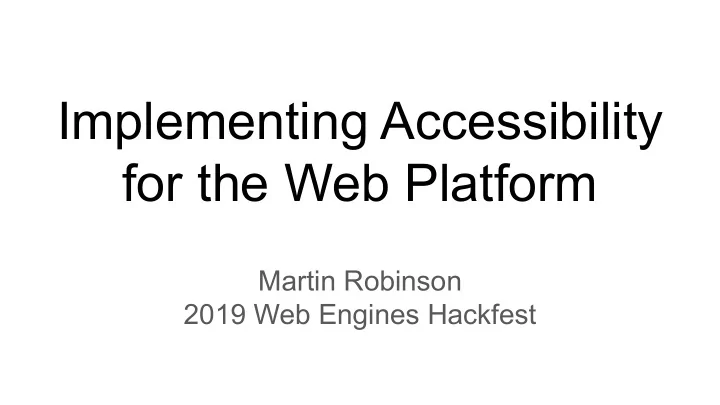

Implementing Accessibility for the Web Platform Martin Robinson 2019 Web Engines Hackfest
The web is for everyone.
Accessibility is useful for everyone.
Accessibility is (increasingly) the law.
Assistive Technologies ● Screen reader ● Braille displays ● On-screen keyboards ● Magnifiers ● Debug inspectors
Architecture Process Boundary Web Accessibility Assistive Browser APIs Technology
Web Browser Architecture Layout Accessibility Platform Tree Tree A11y APIs
Platform Interface - Queries ● Structure of accessibility tree ● Object dimensions and positions ● Role of accessibility objects ● Properties of nodes ● Text content of node ● Cursor and selection information ● Structure of tables
Platform Interface - Actions ● Activate links and other interface elements ● Open and traverse menus ● Select menu options ● Change cursor position or selection ● Scroll browser window ● Scroll an element into view.
Chromium Specific Details Accessibility Tree Platform Tree Events A11y APIs Comparison Accessibility Tree’
Platform Interface - Events ● Cursor and selection changes ● Node focus changes ● Window activation changes ● Parent or children of node changes ● Node property and attribute changes
What are we doing? ● Implementing this for Chromium and ATK ● Lots of connecting Chromium interfaces to platform interfaces ● Accessibility on the Linux desktop is divided into two pieces ○ ATK: Server-side ○ AT-SPI2: Client-side ○ (meaning of server and client are reversed relative to common browser meaning) ● Mapping between browser roles and platform roles is specified! ● Look for it in upcoming Chromium releases
Questions?
Recommend
More recommend